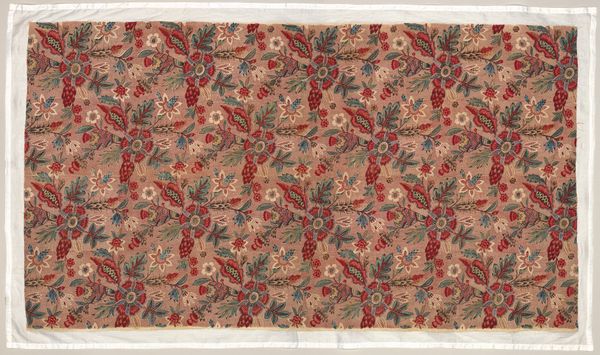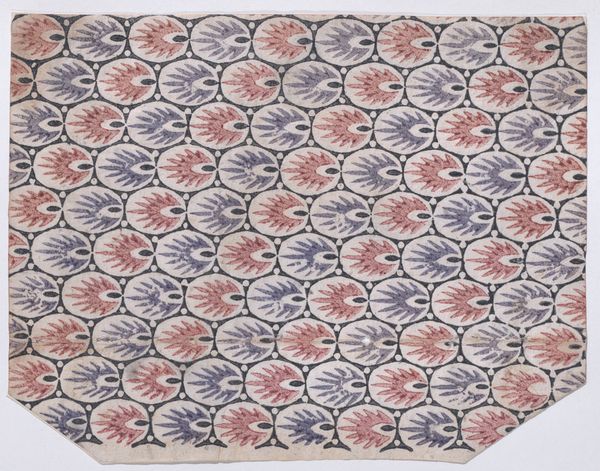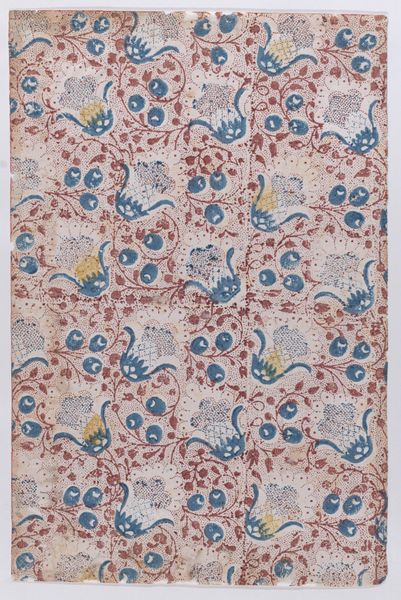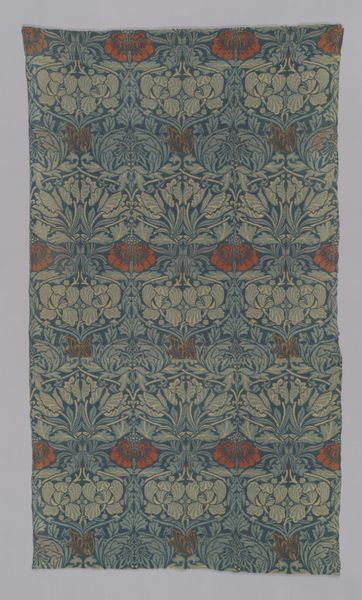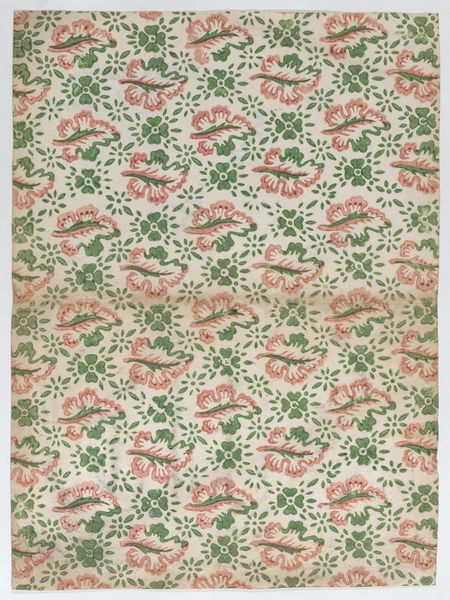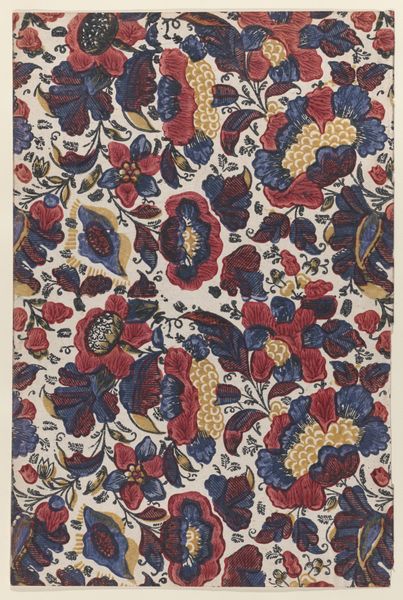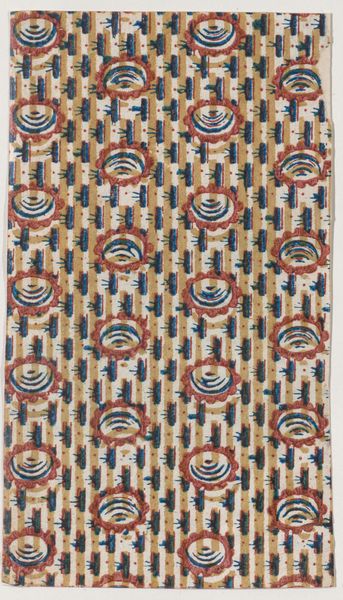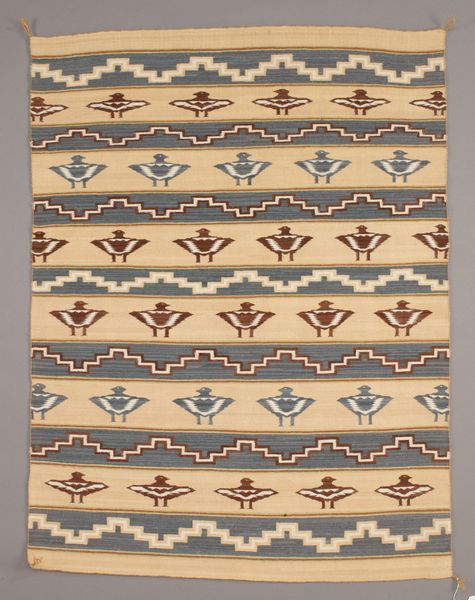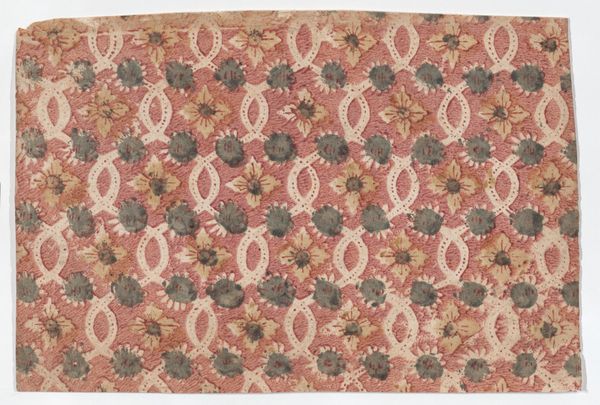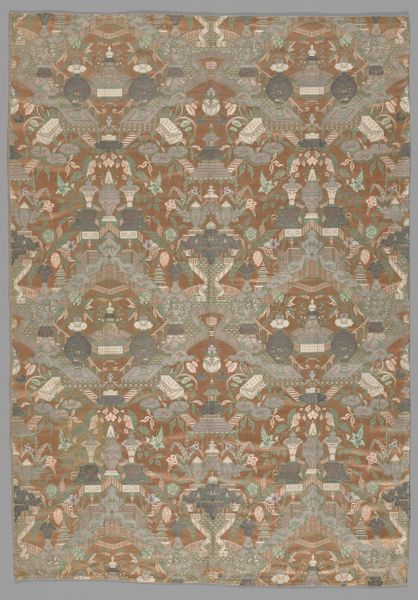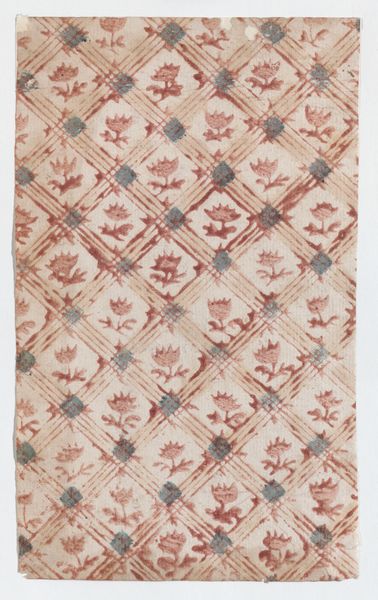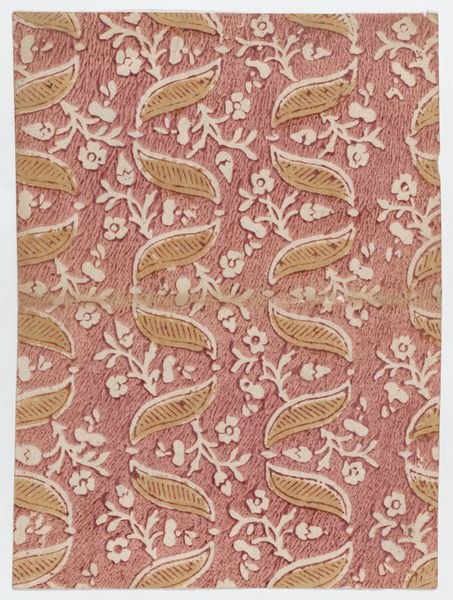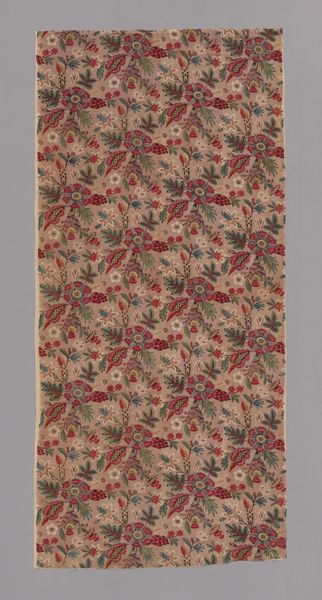
fibre-art, silk, textile
#
pattern heavy
#
fibre-art
#
naturalistic pattern
#
silk
#
asian-art
#
textile
#
japan
#
geometric pattern
#
abstract pattern
#
organic pattern
#
repetition of pattern
#
vertical pattern
#
pattern repetition
#
decorative-art
#
layered pattern
#
organic texture
Dimensions: 49 1/4 × 41 1/8 in. (125.1 × 104.46 cm)
Copyright: Public Domain
This wrapping cloth, or uchikui, features several repeating symbols of great cultural significance. Note the presence of stylized waves, clouds and plum blossoms, recurring motifs in Japanese art. These symbols are not merely decorative; they carry profound meaning. The plum blossom, for instance, represents resilience and renewal, often linked to the arrival of spring and the overcoming of winter's hardships. Similarly, the wave motif evokes the eternal flow of time and the cyclical nature of life, echoing the Heraclitean concept of constant change. Consider how these symbols, while rooted in nature, transcend their literal form to embody complex philosophical ideas. We see related symbolic use in other contexts across time and cultures. For example, water motifs appear in ancient Greek art, where rivers are personified as gods, or the ubiquitous lotus flower in Buddhist art representing purity, rebirth, and spiritual awakening. Each use reflects a deep-seated human impulse to find meaning in the natural world, imbuing it with emotional and spiritual significance. These patterns and recurring images across cultures are not coincidences, but echoes of shared human experiences, resurfacing in our collective consciousness.
Comments
No comments
Be the first to comment and join the conversation on the ultimate creative platform.

